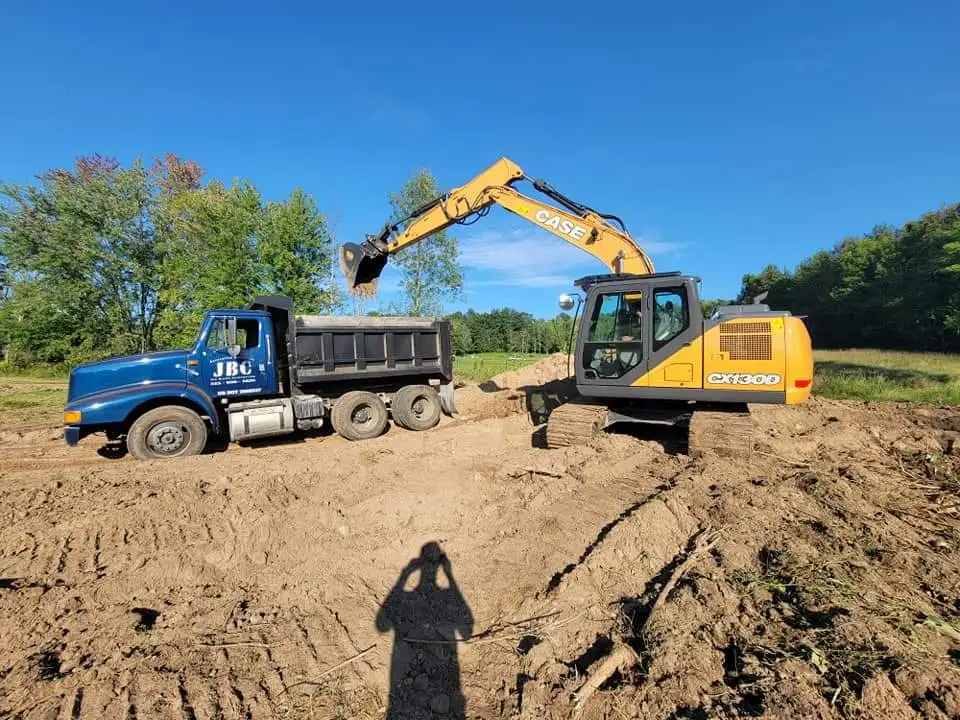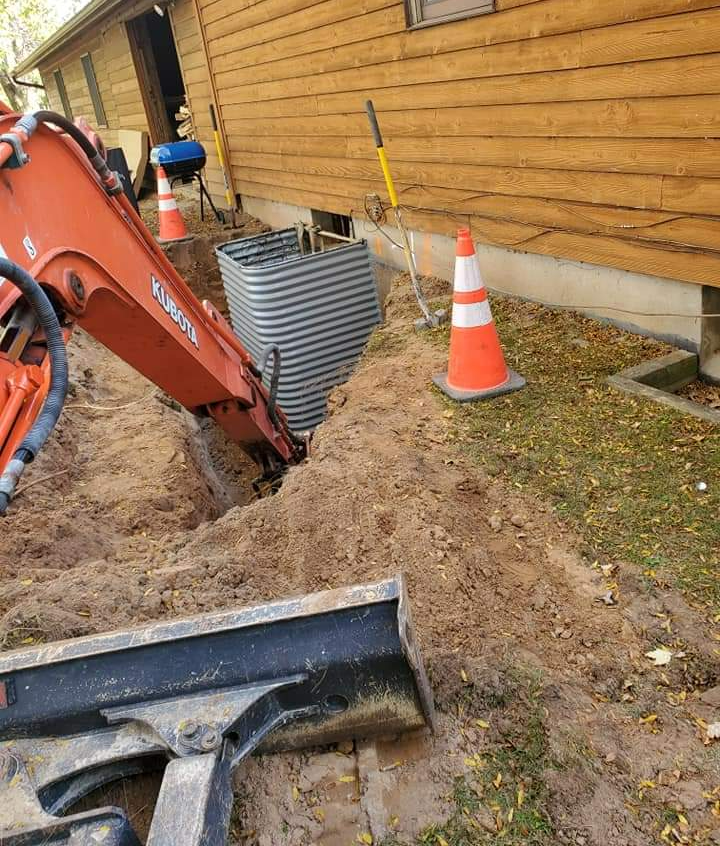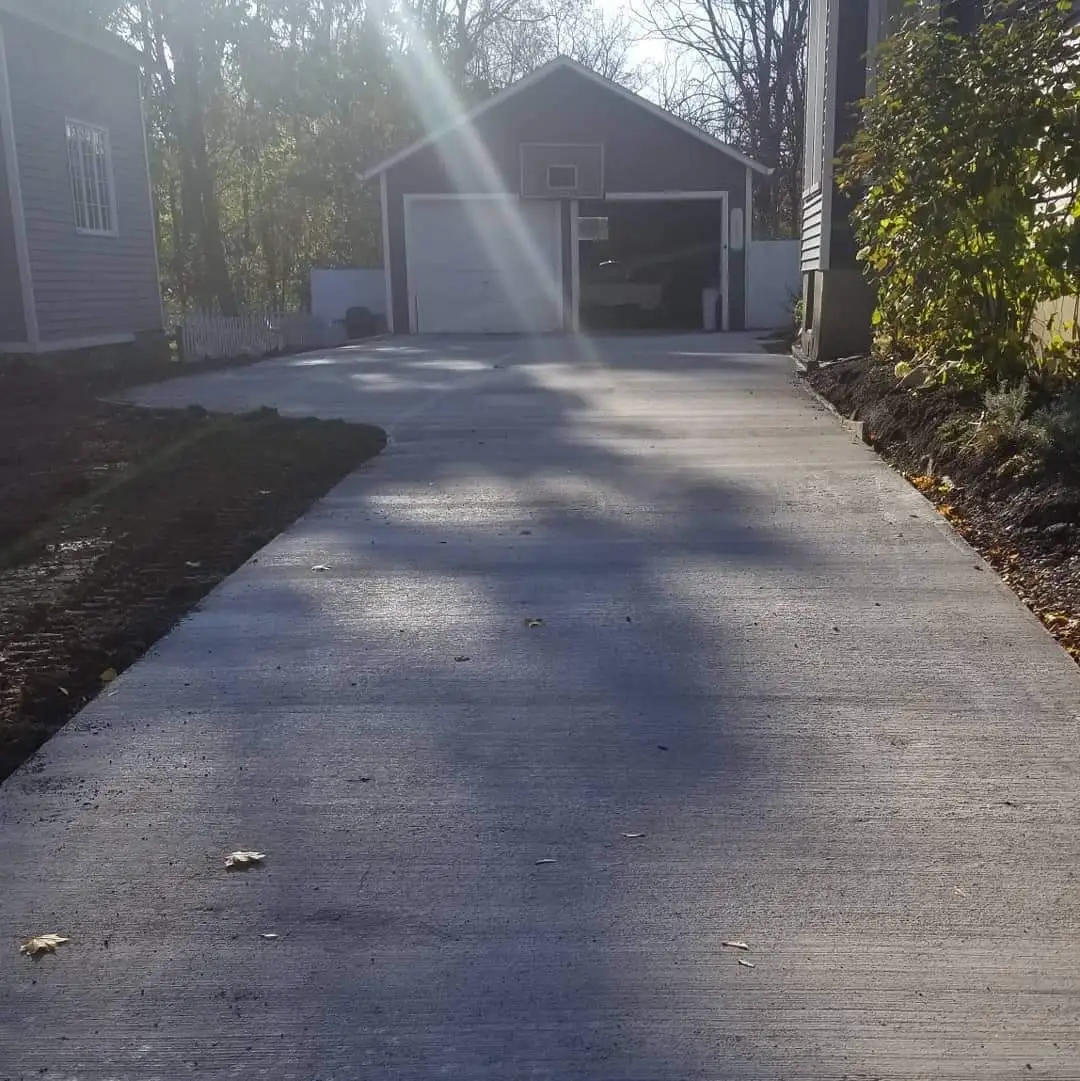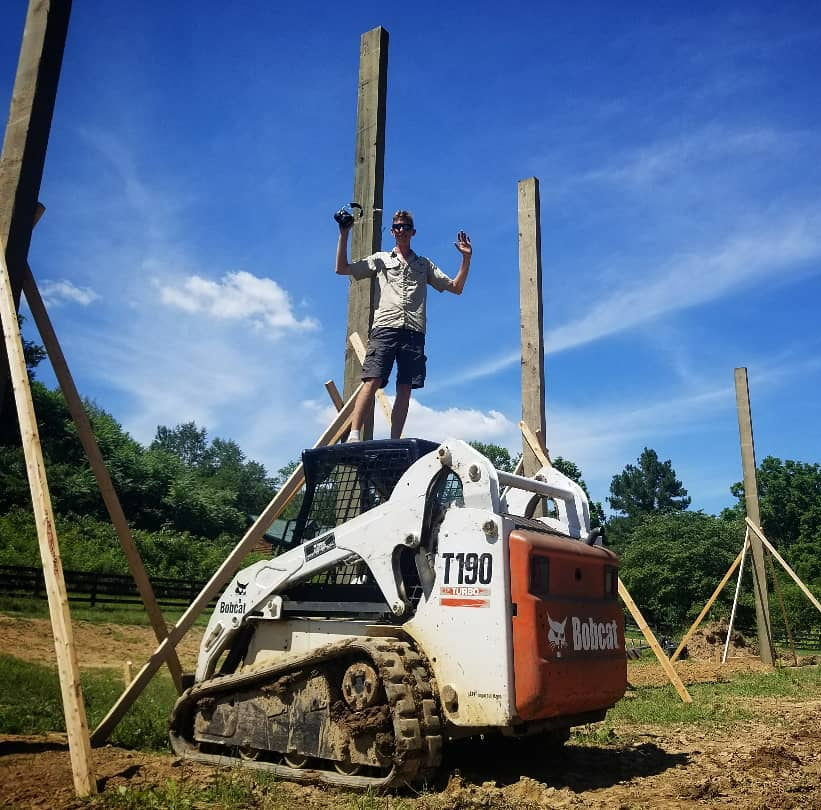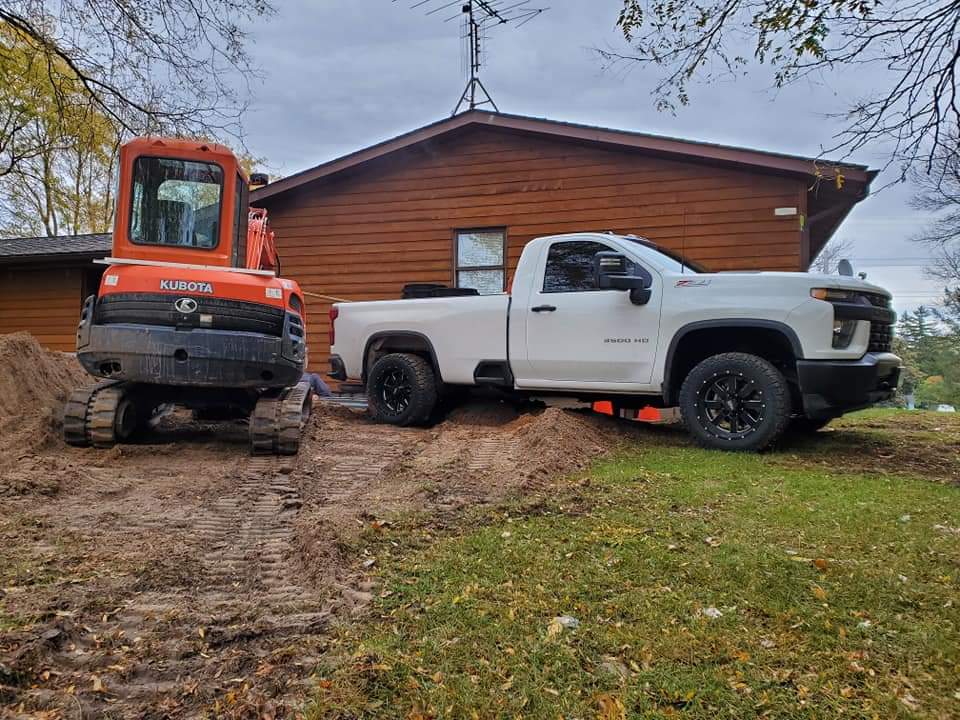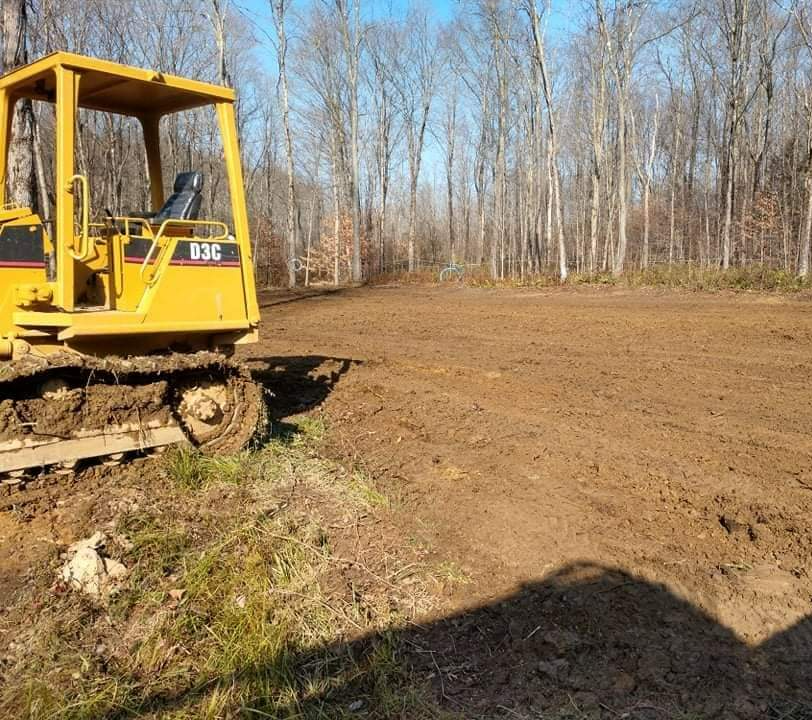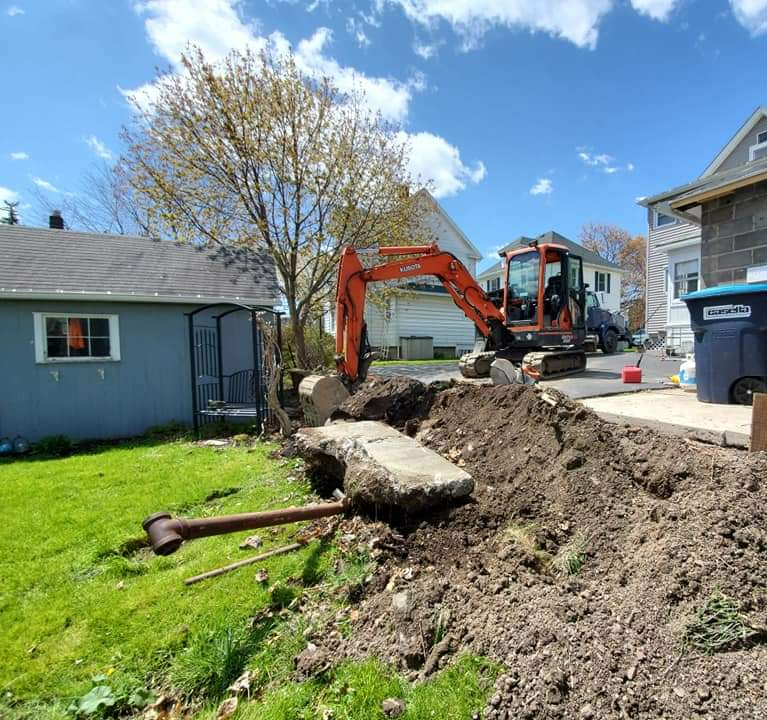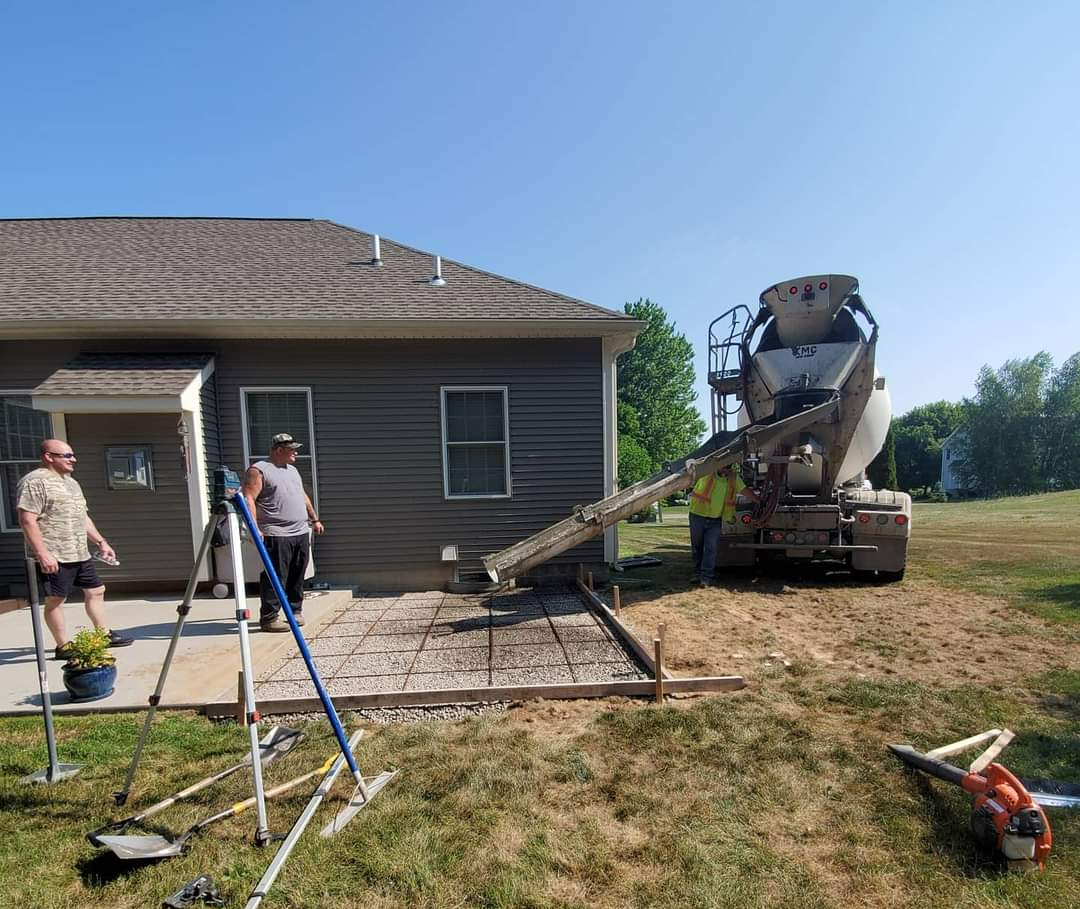We've been providing excellent service as
Foundation Excavation Contractors
...for over 20 years!
Foundation Services Overview
When it comes to your foundation excavation project, D R Excavation is the reliable and experienced contractor you need.
Understanding the critical importance of a building's foundation, we possess the equipment and expertise to execute precise excavation and prepare the foundation correctly.
Our methodical process involves utilizing heavy machinery to clear existing structures, followed by excavation to the desired dimensions.
After completing the excavation, our skilled contractors level the area, incorporating necessary drainage pipes.
The final step involves backfilling the hole with concrete or other suitable material, adapting the process as per project requirements.
This approach guarantees that the foundation is meticulously prepared for construction, ensuring quality and reliability from our excavation contractors.
Earthwork and Site Development
The first step in any excavation project is to conduct a site survey. This helps to determine the boundaries of the work area and identify any potential hazards.
Once the survey is complete, the next step is to remove any trees or other obstacles that may be in the way.
Next, the we will excavate the area to the specified depth. This may involve using a backhoe or other heavy machinery. Once the excavation is complete, the next step is to level off the area and prepare it for the foundation. This usually involves compacting the soil and adding fill material such as gravel or sand.
Finally, the contractor will install any drainage or utility lines that are required. Once all of these steps are complete, the foundation can be poured and the construction process can begin.
Helical Anchors
Helical anchors are integral in our foundation work, especially in areas with weak or collapsible soil. After marking and excavating, a hole is drilled to fit the anchor. Using a specialized drilling machine, the helical anchor is screwed into the ground, providing crucial support to prevent collapse.
Once anchored, it supports the excavation, and a hydraulic jacking system may be used to lift and secure it further. While commonly used in foundation and retaining walls, helical anchors, composed of helical plates on a rotating shaft, can also be applied to abutments. Their design accommodates settlement and seismic movement, ensuring stability without failure.
Concrete Foundations
Various concrete foundations exist, sharing common features. Foundation walls, reinforced with steel rebar, ensure the strength to support your house. The foundation footing, resting on bedrock or supportive soil, is a robust concrete slab. A drainage system prevents moisture damage by collecting and removing water around the foundation.
Concrete foundations boast strength for diverse buildings, resistance to moisture damage, and a long lifespan. Consider a concrete foundation when planning to build a new house.
Driven Piling
When preparing a site for a new building, we employ driven piling for foundation work when the soil lacks the strength to support the structure. This involves drilling a hole, inserting a steel pipe or wooden beam, and driving it to a stable depth.
Afterward, we fill the hole with concrete, connecting the piles for a secure foundation, resistant to soil issues.
Using a crane-suspended pile driver, we hammer the pile into the ground, creating vibrations that solidify the soil around it. This "soil cone" ensures pile stability. Driven piles are ideal for soft soils, seismic retrofits, and other projects requiring robust foundations.
Caissons
Caissons, cylindrical structures supporting building weight, involve digging, pouring, and curing concrete. Post-curing, the caisson is welded to the structure, creating a robust connection. Backfilling and soil compaction follow to establish a solid foundation. The concrete-filled caisson's weight ensures soil stability, contributing to a reliable base for structures.
These versatile elements aren't limited to land use. Caissons find application in creating foundations for underwater structures such as piers and docks, showcasing their adaptability across various construction scenarios. Their ability to provide stable support both on land and underwater makes them a valuable choice in ensuring the structural integrity of diverse projects.
Site Clearance For Foundations
Before starting foundation work, thorough site prep is essential. Clearing vegetation and obstacles, addressing trees and rocks, precedes excavation. The plan includes removing trees, shrubs, and impediments. After clearing, excavation digs into the topsoil and subsoil for the foundation.
Using excavated soil for backfilling supports the structure and promotes sustainability. This process also levels the ground, readying it for construction. Meticulous site prep and excavation establish a stable foundation, balancing structural integrity and environmental consciousness.
Excavating For Foundations
Before beginning the actual excavation, wooden pegs and strings are used to mark the area of land to be dug up.
Depending on how deep or hardy the soil is, a trench may need to be reinforced as it is removed from an allotted area.
Local building codes dictate the distance between your structure and a nearby fence, overhead power line, easement, or the like.
We use a variety of methods to excavate land in preparation for a foundation. The most common method is to use a backhoe to dig a large hole. We then use a bulldozer to level the hole and remove any large rocks or roots. Once the hole is dug and the land is leveled, we can move on to pouring.
Pouring The Foundation
Once we have finished digging the hole and preparing the site, the poured foundation can begin.
The process of pouring a foundation starts with creating a template. This template will act as a mold for the foundation and will ensure that it is the correct size and shape.
Once the template is in place, concrete is brought to the site and poured into the mold. The concrete is then leveled and smoothed before it begins to set.
Once the concrete has set, the foundation is complete. The template is then removed and the building can begin to be constructed on top of the new foundation.
FAQ's About Foundation Excavation
Reach Out For A Free Quote Today
So if you're looking for an excavation contractor that can provide quality workmanship at a fair price, then look no further than our company. We'll be happy to provide you with a free estimate for your project. Contact us today to get started!

